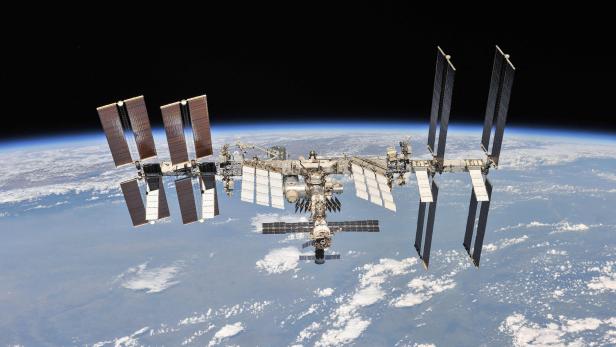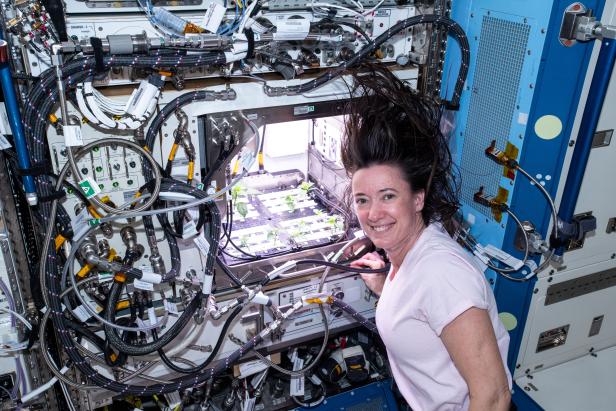
© APA / AFP / NASA / Roscosmos / – / –
For more than 30 years, the International Space Station (ISS) has been the only branch of humanity in space. Scientists from all over the world are conducting research on it (see below) and demonstrating every day how international cooperation can work. 1998 became With the construction of the station seem. Originally gone one by one Service life 30 years the end.
Having crossed this mark, the end of the International Space Station is now at hand. The largest contributors, the United States and Russia, have different views on the exact timing. Russia is talking about one Withdrawal of astronauts in 2025. NASA carrying the station Ready to operate by 2028. But what exactly should happen when the day of farewell comes?
crash plan
Space agencies have been dealing with this issue for a long time. In 2010, NASA came up with a plan for it controlled crash progress. Just like Russian Mir . space station On March 23, 2001, the International Space Station was in the so-called “space cemetery“Be directed. This is South Pacific RegionThis is far from any land mass and settlement. What falls there cannot fall on anyone’s head.
It has a huge space station 110 meters and a block of 450 tons Landing there is of course a technical challenge. According to the plan of NASA, Russia progressA modified-thrust spacecraft takes the International Space Station to its final resting place.
tense situation
As for the plan that they will have to make NASA and its Russian counterpart, Roscosmos, Reach an agreement and share costs. At the moment, that seems difficult. After a serious incident in late July, in which a Russian Nauka unit ignited its engines in an uncontrolled manner, NASA has certain doubts about the reliability of the Russian technology.
The ridiculous claim from Russia that an American astronaut sabotaged the International Space Station in 2018 exacerbates the situation current tensions Among the major space powers.
Leave it in space
“Sinking the International Space Station would not be feasible anyway,” says space expert. Eugene Rachel to the future. According to him, she 60 to 70 percent From the space station even after the entire crew has been pulled out It is still usable. Technically and economically, it is better to have ISS stay in space. Parts of it can be used for a new space station In the future in the orbit of the moon targeting. This is cheaper than building new units on the ground and To send to the moon. Technically, transportation isn’t a problem, as one of the spaceships currently being developed by Elon Musk’s SpaceX could be fully packed with ISS units.
Russia can also use its own units A purely Russian space station use. The fact that such a project is being planned has been discussed in recent years always speculate. After all, China is currently building its own space station.
According to Rachel, the International Space Station can also enter one with a docked spaceship higher orbit to be brought. At the moment, its height is about 420 kilometers above the Earth’s surface, and it can rise to 1000 kilometers. The station can remain there for a long time without additional constant reinforcement – and if nothing is better – than A destination for space tourists or Intercultural Monument continues to exist.
Astronaut Megan MacArthur is currently tending to young pepper plants on the International Space Station
© NASA
Hundreds of research projects are being carried out aboard the International Space Station at the same time. Most of them deal with the possibilities offered by weightlessness. Among other things, plants are grown in their own small greenhouses. We are currently trying growing pepper. This has never happened in space before because peppers take a relatively long time to form fruits. Many similar experiments are being conducted on the International Space Station. In the case of longer spaceflights, plant breeding could become vital.
Another area of current research is genetics. Because of the strong radiation in space, it may be necessary in the future DNA damage repair. That’s why attempts are being made in space to remove, repair and re-insert bits of genetic material from yeast fungi and reintroduce them into the DNA strand.
Many of the experiments on the International Space Station were housed in small research stations attached to the station’s walls like compartments in long rows of shelves. One such physics experiment deals with building nanomaterials with the help of magnetic fields. Robots are also tampered with. There are about severalAstrobiswhich can move through the space station with the help of propellers. For them, among other things, a program is being developed to send them completely independently on control flights through the International Space Station.

“Problem solver. Proud twitter specialist. Travel aficionado. Introvert. Coffee trailblazer. Professional zombie ninja. Extreme gamer.”





More Stories
With a surprise in the case: a strange cell phone from Nokia was introduced
PlayStation Stars: what it is, how it works and what it offers to its users | Sony | video games | tdex | revtli | the answers
t3n – Digital Pioneers | digital business magazine